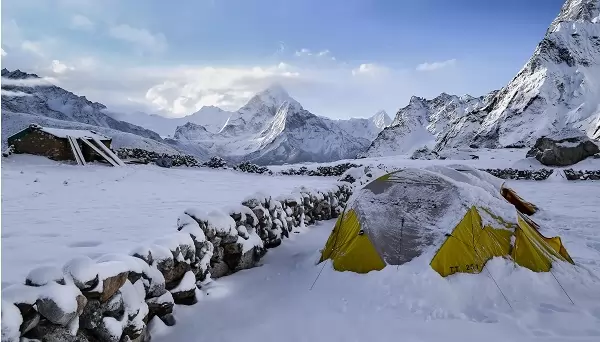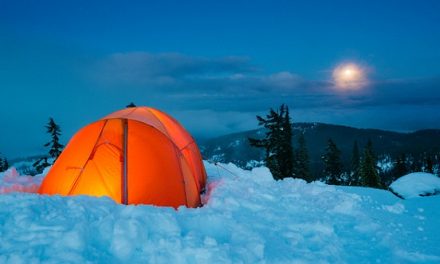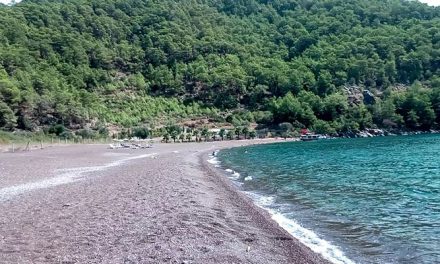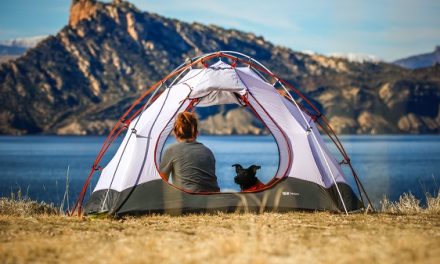The weather is cold, if you don’t go out much or you can’t go out, I invite you to winter camp… Come and feel the cold to your bones 🙂
I said feel the cold air to your bones, but don’t worry you won’t get pneumonia, because I’m telling you how to prepare. Read carefully…Winter camping is a fun and dangerous activity. For this reason, I recommend you to go to the snow camp with an experienced and professional friend. The most important factor in choosing a place to camp is your expectations. So with what expectation are you doing the camp? Looking for excitement? Do you want to be in touch with nature or are you doing it to get free accommodation? Clarify such questions in your mind and decide where to camp accordingly.
In this article, I will try to answer questions such as what we should pay attention to when camping, what equipment we should take with us, as much as I can. You can ask any questions you have in the comments section, and where can a winter camp be held in Muğla? Check out our article on the subject.
The most basic rule of snow camp is to “keep the heat” and most importantly “to maintain body temperature”. I guess nobody wants to have hypothermia. Therefore, take with you as much light, low-volume items as possible, which you think will keep you warm or increase your temperature (“take quilts, blankets, whatever you have”, this part is for friends who will camp in the park above the neighborhood).
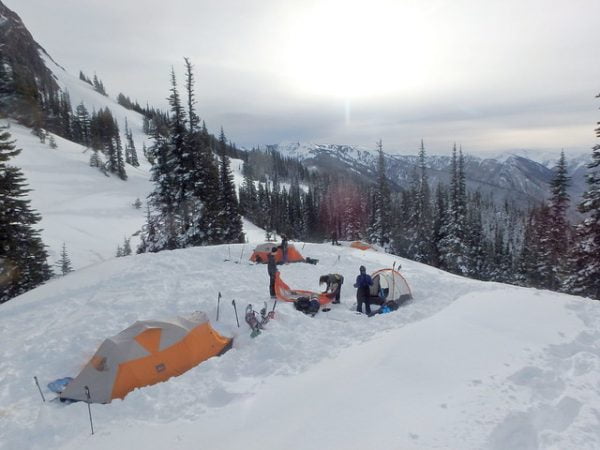
Photo by Dave Golias on Flickr
Things to Consider When Choosing a Winter Tent
- A strong tent to withstand wind and snow. It must have strong poles to carry the falling snow and withstand the wind.
- It should have roof lines that will allow the falling snow to fall on the tent as much as possible without accumulating. For this reason, you should generally prefer dome-style tents. As long as the falling snow accumulates on the tent, it will make intense moisture and water will leak into the tent in drops. If snow accumulates on the tent, if it does not meet the conditions in the above article, it is possible that the tent will collapse or even become unusable, or a problem may occur in the poles.
- You will need more space since the items you carry or need to carry with you in winter camps will take up more space in terms of volume and you need to have more materials compared to summer conditions. Depending on the falling snow, you may be stuck in the tent and not be able to go out as you planned. If you have other friends with you, it may not be pleasant to stay in a small tent for a long time.
- The tent should be moisture and rainproof. You should pay attention to the tent with a rain cover outside. Less ventilated raincoats will reduce condensation in the ventilated inner tent and insulate against the cold by increasing the air gap between the raincoat and your tent.
- Make sure the manufacturer recommends the tent for winter use. Most of the tents are designed for three seasons, the seams and poles cannot support the weight of snow and provide sufficient resistance against the wind.
- Make sure there is an ice liner inside the tent. One of the problems in snow camps is condensation. While we spend time in the tent, especially when we sleep at night, there will be a high amount of humid air coming out of our breath. This air rises due to the laws of physics and gathers at the top of the tent and either drops or freezes into ice depending on the severity of the cold air outside. These drops or ice may fall on you or your belongings again. The ice liner inside the tent acts as a barrier between you and the outer layer of the tent.
- It should be preferred with a luggage compartment for a wider usage area.

Photo by sam x on Unsplash
Choosing a Place for Winter Camp
We chose our tent in line with what was explained above, so what kind of area will we set up our tents on?
When you arrive at the campsite, first start looking for a place to set up your tents and cook.
- Flat areas should be chosen as much as possible, this is a general camping rule anyway.
- Avoid high spots and open areas where the wind can be strong.
- Make sure that there are no dry tree branches on the area where you will set up your tents. It may fall on you with the effect of snow or wind.
- Stay away from geographical factors such as low lake shores that negatively affect the temperature of the air.
- Definitely avoid places with avalanche danger.
- I guess there’s nothing better than the morning sun that warms you up on a cold winter day. Try to choose a place that has the opportunity to receive the ploughing sun.
- Since the northern regions are colder, south-facing areas will be both warmer and darker later.
- Be careful not to be near areas such as lakes and streams where you can provide clean water, but within reach. If there is snow, you will not have much trouble with water.
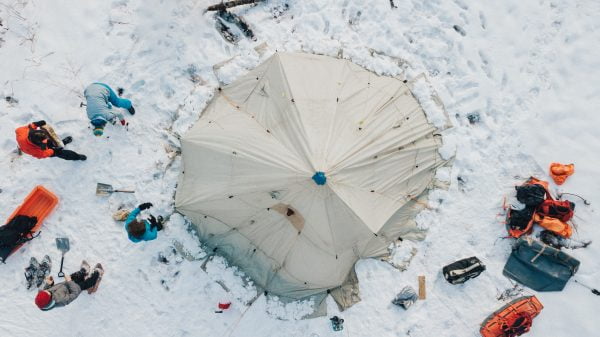
Photo by sweet ice cream photography on Unsplash
Things to Consider When Setting Up a Tent in the Snow
We chose our tent and the area where we will set up camp in line with what was explained above, of course, it’s not over. How are we going to set up this tent?
First of all, because we will be in difficult weather conditions and we do not know how much snow will fall. Take extra poles and stakes with you, just in case.
- Because the ground of the area where we will set up our tent will be either snow or wet ground. Buy materials such as a thermal blanket (the shiny aluminum foil-like material we see in the news, also called a space blanket) or tarp to help protect the tent floor from water and cold.
- Set up the tents to form a 90-degree angle with the blowing wind and fix them, even using large stakes if possible.
- Build snow walls in the direction of the wind to minimize the effect of the wind. Heap snow on the sides of the tent.
- When setting up your tent, prepare a cooking area near the tent. Because cooking in the tent will cause you to be poisoned by carbon monoxide and the water vapor formed will cause the problems we have described above.
- Dig a hole in front of the tent so you can take off your boots faster.
- Place the pads you brought for floor insulation and remove them from the cover for your sleeping bag to expand.
- Get a small shovel and brush, otherwise you will have to clear snow with your hands, feet or anything else you have with you when entering or leaving the tent. Also, ice particles may form due to condensation, as the inside of the tent will get colder during your absence. You will need to sweep so that these particles do not melt and wet the inside of the tent.

Photo by Adam Brown on Flickr
Getting Ready for the Night at Winter Camp
We finished our day and it’s time to go to bed.
- First of all, light a fire, but be careful not to be too close to the tents so that the sparks do not make a hole in your tent.
- Heat the fire by placing large stones, meanwhile, dig pits under your tent where you can put the stones. Then, put the heated stones in these pits, cover them with soil and fix your tent again after the steam stops. It may be a little troublesome to relocate and re-fix the tent, but these hot stones will keep you warm for a long time. (Applicable for situations where you set up your tent on a soil ground)
- Before you go to bed, fill your bottles with hot water while you eat your dinner and put your things in a good way.
- Sweep the snow on the tent door well. Take your boots outside and clean them well, or ask a helpful friend to clean them.
- Remove all wet/damp layers, especially socks, and replace with dry ones.
- Wear your comfortable clothes in the sleeping bag. Do not exaggerate the dressing, the air gap in the overalls is necessary for insulation. Some opinions say that the best warm-up is to sleep in your underwear. If you are one of those who think this way or if you want to try it, undress 🙂
- Warm up before getting into the sleeping bag. Do exercises like the butterfly movement.
- Warm up the hot water bottles you have prepared by putting them in the sleeping bag.
- Place your boots and wet gear in a bag and pack the hot water bottles you heated the sleeping bag so you can freeze and dry the stuff.
Wear a hat to keep your head warm. - In order not to increase the amount of moisture in the overalls, take care to sleep with your head outside.
- You may wake up several times a night and feel the need to move, this is perfectly normal. It will be sufficient to move a little or change position to increase the blood circulation in the suppressed tissues. If you don’t get enough protein, your chances of warming up will increase.
- If you feel the need to go to the toilet at night, go and urinate as soon as possible because if you say “I’ll keep it”, you will probably not be able to sleep again and your body will spend more energy to warm the liquid inside you.
Basic Equipment for Camping:
You can prepare items such as flashlights, pots, pans, pocketknife, garbage bags that you will need during the camp, according to your wishes.
Let’s especially keep garbage bags and not pollute our nature by collecting our garbage at the end of the camp.
You can help me improve the article by stating your views, experiences or points I forgot to write in the comments.
Have a good time now….

